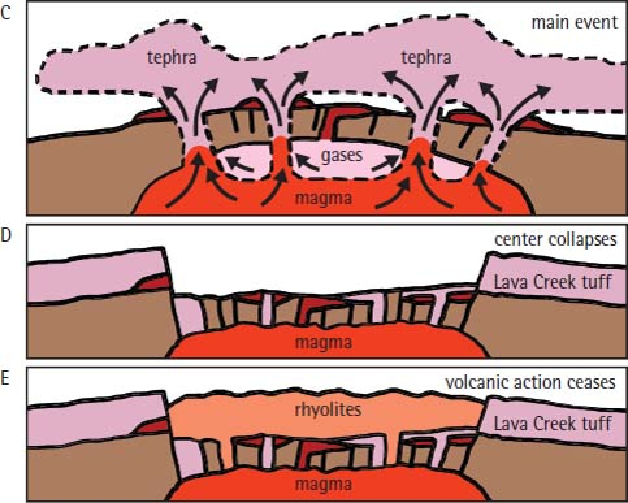Travel Reference
In-Depth Information
A
shows rising magma (in red) forcing the overlying rocks to arch up. Cracks form in the
arched rocks (in brown) and extend downward as the arching increases. In
B
cracks reach
down to the magma chamber, and some molten rock (darker red) flows out on the ground
surface as lava. This reduces the pressure, allowing steam to form from the water dissolved in
the magma.
C
(next page) shows that after some time, accumulating steam and other gases
build up tremendous forces and cause a gigantic explosion of tephra (pink), composed of
magma, gases, and some older rock. The tephra is sent far and wide and high into the air. A
space containing only gases remains above the magma, leaving the rocks above unsupported.
In
D
the
tephra
has fallen out of the air, forming both thick layers of Lava Creek tuff (pink)
away from the explosive eruption and discontinuous layers and blocks of rock within the af-
fected area. The overlying rocks have collapsed into the empty space, creating a large caldera
many miles across.
E
shows how, after the main caldera-forming event, magma continues to
rise through cracks to reach the caldera floor and make Yellowstone's high plateau of
rhyolite
lavas (orange).
—B.J.G./J.S.

